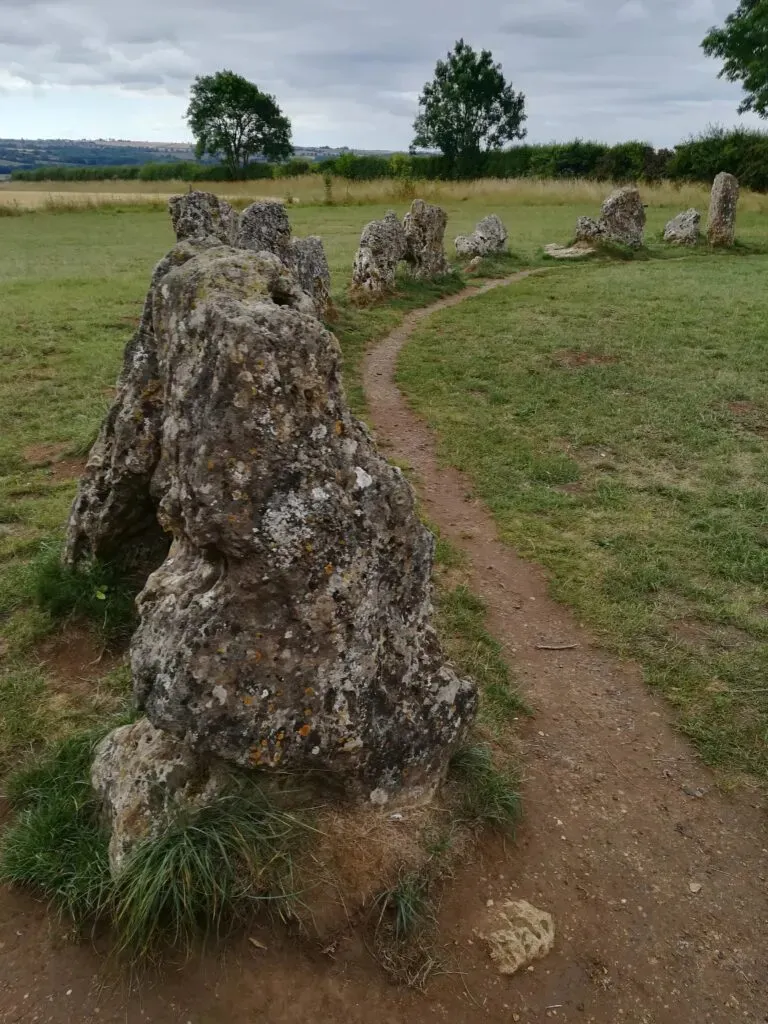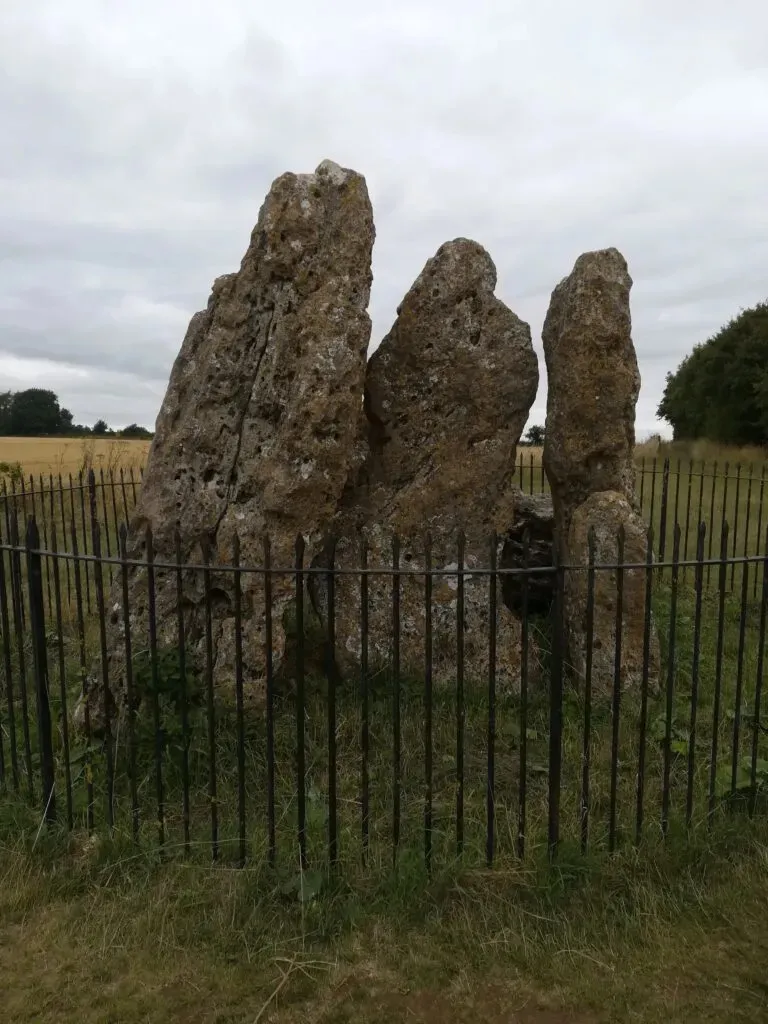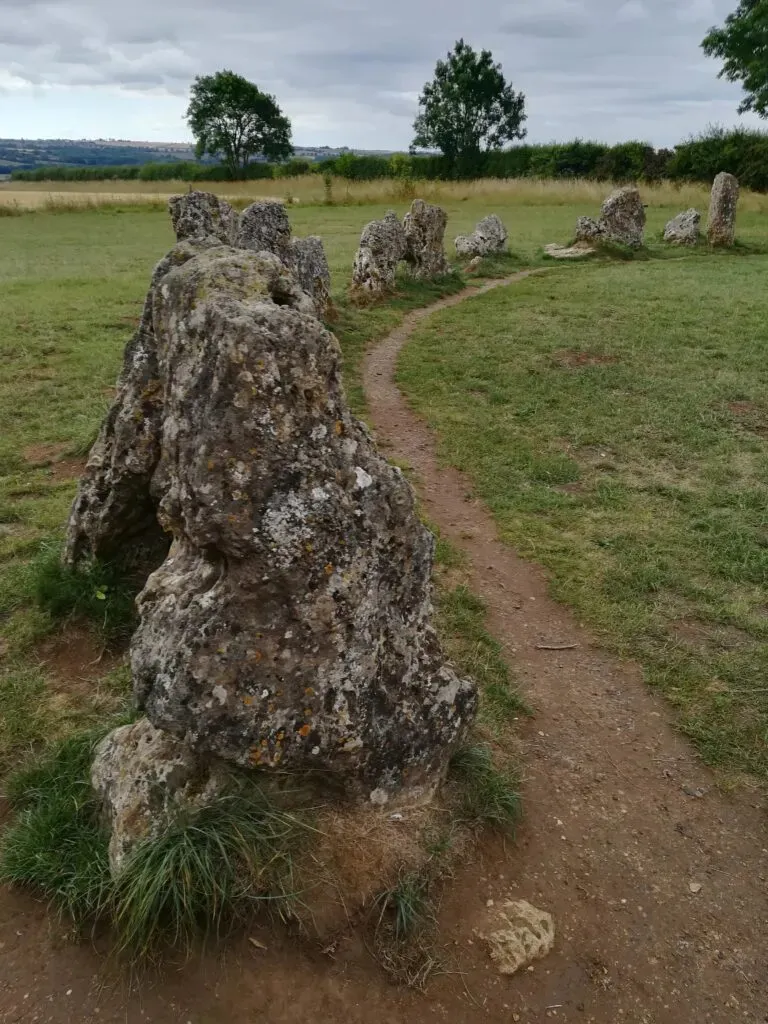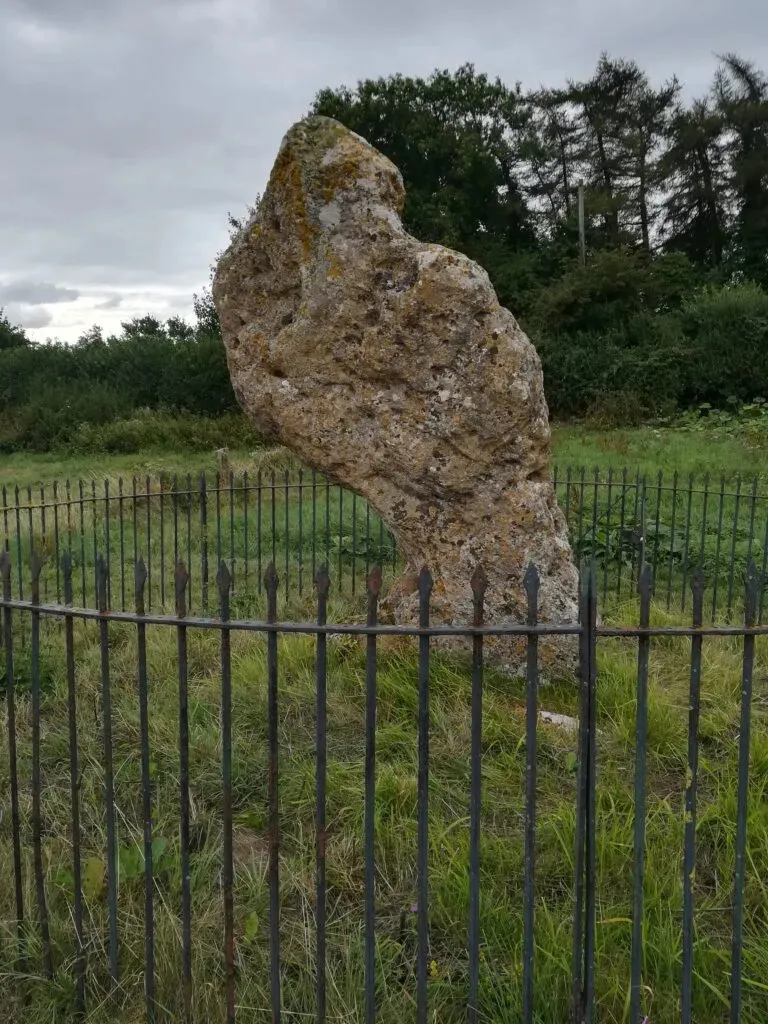The Rollright Stones — Facts, Folklore & Function

In the Oxfordshire countryside stands a trio of ancient monuments: The Whispering Knights, The King’s Men, and The King Stone.
Each was built at a different time, for a different reason — and each has its own story.
The Whispering Knights (the oldest thing I’ve touched)
Fact: The remains of a Neolithic burial chamber, dating to around 3,800–3,500 BCE — older than Stonehenge.
Function: Likely a communal tomb for an early farming community, used for ritual and remembrance.
Folklore: Four knights plotting against their king, turned to stone by a witch who overheard them.

The King’s Men
Fact: A late Neolithic or early Bronze Age stone circle (c. 2,500–2,000 BCE).
Function: Possibly a gathering place for seasonal ceremonies or astronomical observations.
Folklore: A king and his army, frozen mid-march because they failed a challenge set by a witch.

The King Stone
Fact: A solitary standing stone, thought to date to the Bronze Age.
Function: May have been a cemetery marker or part of a processional route.
Folklore: The petrified king himself, kept apart from his men. Pieces were once chipped off for luck.

Standing at these ancient ruins, I thought about how many people have done the same in their lifetime.
I’ll never know all their stories or why they were really put there — but knowing this place is still here to be found is good for me.